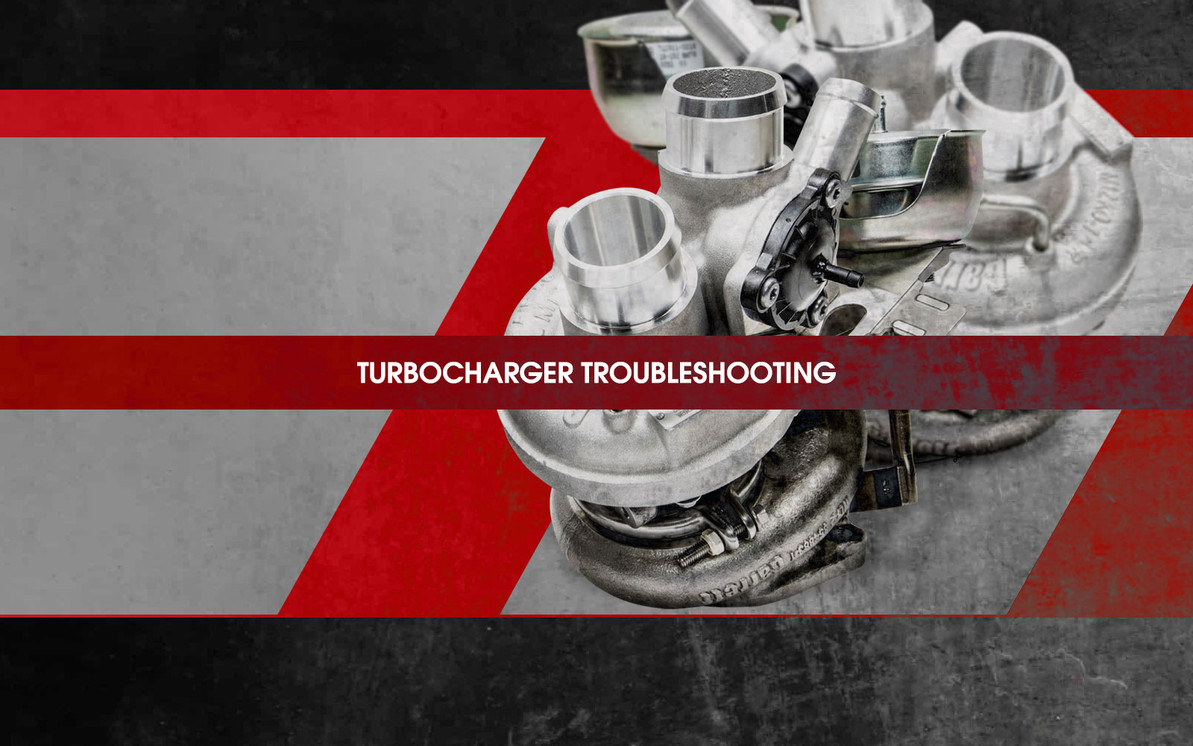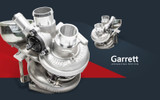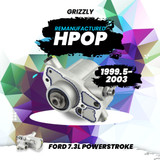Turbocharger Troubleshooting
OEM turbos are made to highly specific standards, not only to deliver the power owners demand, but also to keep diesel and gas engines performing at top efficiency year after year. With correct parts and regular maintenance, drivers who utilize turbocharged engines can depend on the performance and efficiency their vehicles were designed to deliver over the long haul.
Loss of power, excess smoke, high fuel consumption, overheating, high exhaust temperatures and oil leakages from the turbocharger are all symptoms that could indicate turbocharger malfunction. However, these faults can often wrongly be attributed to the turbocharger, as defects in other components can also produce the same symptoms.
Diagnosing a damaged turbocharger can be complicated, but there are many ways your vehicle will let you know that it is having issues with the turbo. All too frequently however, serviceable turbochargers are removed from engines before the cause of the problem has been determined. Always inspect and assess the turbochargers condition before removal from the engine. As always seek the advice of trained professionals before modifying or attempting to self-repair your turbocharged vehicle.
Warning: Self attempted turbocharger maintenance and repair could void your original equipment product warranty. This guide is provided purely as an informational resource, we are not responsible for any damage caused by self-attempted repairs or replacements.
| Possible Failure Diagnosis | Engine Running Hot | Poor Transient Response | Smoke | Engine Lacks Power | Black Exhaust Smoke | Blue Exhaust Smoke | High Oil Consumption | Turbocharger Noisy | Cyclic Sound from the Turbocharger | Oil Leak from Compressor Seal | Oil Leak from Turbine Seal |
|
Dirty air cleaner Clean or replace element according to manufacturer’s recommendations |
✔ | ✔ | ✔ | ✔ | ✔ | ✔ | ✔ | ✔ | |||
|
Restricted compressor intake duct Remove restriction or replace damaged parts as required |
✔ | ✔ | ✔ | ✔ | ✔ | ✔ | ✔ | ✔ | ✔ | ||
|
Restricted air duct from compressor to intake manifold Replace seals, gaskets or tighten fasteners as required |
✔ | ✔ | ✔ | ✔ | ✔ | ||||||
|
Restricted intake manifold Refer to engine manufacturer’s manual and remove restriction |
✔ | ✔ | ✔ | ✔ | ✔ | ||||||
|
Air leak in feed from air cleaner to compressor Replace seals, gaskets or tighten fasteners as required |
✔ | ||||||||||
|
Air leak in feed from compressor to intake manifold Replace seals, gaskets or tighten fasteners as required |
✔ | ✔ | ✔ | ✔ | ✔ | ✔ | ✔ | ✔ | |||
|
Air leak between intake manifold and engine Refer to engine manufacturer’s manual and replace gaskets or tighten fasteners as required |
✔ | ✔ | ✔ | ✔ | ✔ | ✔ | ✔ | ||||
|
Foreign object in exhaust manifold (from engine) Refer to engine manufacturer’s manual and remove obstruction |
✔ | ✔ | ✔ | ✔ | ✔ | ✔ | |||||
|
Restricted exhaust system Remove restriction or replace damaged parts as required |
✔ | ✔ | ✔ | ✔ | |||||||
|
Exhaust manifold cracked, gaskets blown or missing Refer to engine manufacturer’s manual and replace gaskets or damaged parts as required |
✔ | ✔ | ✔ | ✔ | ✔ | ||||||
|
Gas leak at turbine inlet/exhaust manifold joint Replace gasket or tighten fasteners as required |
✔ | ✔ | ✔ | ✔ | ✔ | ||||||
|
Gas leak in ducting after turbine outlet Refer to engine manufacturer’s manual and repair leak |
✔ | ✔ | |||||||||
|
Restricted turbocharger oil drain line Remove restriction or replace damaged parts as required |
✔ | ✔ | ✔ | ✔ | |||||||
|
Restricted engine crankcase breather Refer to engine manufacturer’s manual, clear restriction |
✔ | ✔ | ✔ | ✔ | |||||||
|
Turbocharger bearing housing sludge or coked Change engine oil and oil filter, overhaul or replace turbocharger as required |
✔ | ✔ | ✔ | ✔ | |||||||
|
Fuel injection pump or fuel injectors incorrectly set Refer to engine manufacturer’s manual and replace or adjust faulty components as required |
✔ | ✔ | ✔ | ✔ | |||||||
|
Engine valve timing incorrect Refer to engine manufacturer’s manual for correct settings and adjust as required |
✔ | ✔ | |||||||||
|
Worn engine piston rings or liners Refer to engine manufacturer’s manual and repair as required |
✔ | ✔ | ✔ | ✔ | ✔ | ✔ | |||||
|
Burnt valves and/or pistons Refer to engine manufacturer’s manual and repair as required |
✔ | ✔ | ✔ | ✔ | ✔ | ✔ | |||||
|
Excessive dirt build-up on impeller and/or diffuser vanes Clean in accordance with the appropriate manufacturer repair manual |
✔ | ✔ | ✔ | ✔ | ✔ | ✔ | ✔ | ✔ | |||
|
Turbocharger damaged Find and correct cause of failure, repair or replace turbocharger as necessary |
✔ | ✔ | ✔ | ✔ | ✔ | ✔ | ✔ | ||||
|
Failed diaphragm Replace using correct Actuator Service Kit |
✔ | ✔ | |||||||||
|
Seized valve Free valve/replace complete turbine housing sub-assembly |
✔ | ✔ | |||||||||
|
Leaking hose Replace hose and clips |
✔ | ✔ | |||||||||
|
Wastegate mechanism set incorrectly Contact any us for more. |
✔ | ✔ | ✔ | ✔ | ✔ |
Recent Posts
-
Innovation of Garrett Turbochargers
The Legacy and Innovation of Garrett Turbochargers When it comes to turbocharging technology, few na …Nov 4th 2025 -
Ford 7.3L Powerstroke F8C HPOP
Featured Product: Grizzly F8C High-Pressure Oil Pump If you're driving a 1999.5–2003 Ford 7.3L Power …Oct 17th 2025 -
Why the Grizzly 10R8899 High-Pressure Fuel Pump Is a Must-Have for Caterpillar C7 Owners
Why the Grizzly 10R8899 High-Pressure Fuel Pump Is a Must-Have for Caterpillar C7 Owners When it com …Oct 6th 2025




